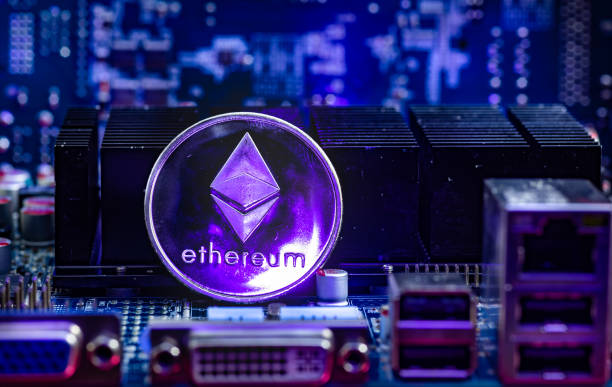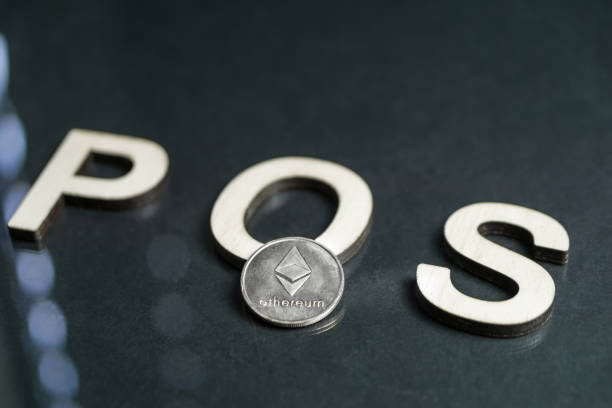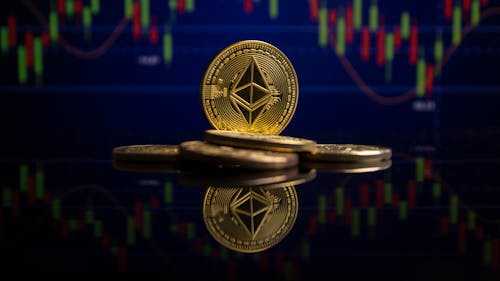Ethereum vs Ethereum 2.0: Everything you need to know.
Welcome to the world of cryptocurrencies, where the only constant is change. Today, we're going to talk about Ethereum vs Ethereum 2.0, the two versions of the second most valuable cryptocurrency in the world or as I like to call it, the darling of the crypto world.
But did you know that Ethereum is getting a major upgrade in the form of Ethereum 2.0? That's right - it's time to bid adieu to the old Ethereum and say hello to the new and improved version.
First things first, let's talk about Ethereum. Launched in 2015, Ethereum is a decentralized platform that allows developers to build decentralized applications (dApps) on top of its blockchain. Unlike Bitcoin, which only allows for peer-to-peer transactions, Ethereum is designed to be a programmable platform that can support a wide range of decentralized applications, from decentralized finance (DeFi) to non-fungible tokens (NFTs).
Ethereum 2.0, formerly known as ETH2, is a series of upgrades to the Ethereum network that aim to improve its scalability, security, and energy efficiency. The upgrade is being developed in multiple phases, with the first phase already live. The final phase of the upgrade will allow Ethereum to handle significantly more transactions, improve smart contract stability, and reduce network fees.
With the upgrade, Ethereum aims to become a transparent and open network for decentralized finance (DeFi). The upgrade roadmap includes key milestones, with the next significant update being the "Shanghai upgrade" in the second half of 2023, which will have a significant economic impact.
Now, you may be wondering - what exactly is the difference between the old and the new Ethereum? Well, my friend, grab a cup of coffee and settle in as we dive into the world of Ethereum vs Ethereum 2.0.
So the current version of Ethereum isn't exactly a superstar when it comes to energy efficiency. I mean, it consumes a lot of power, like, an entire country's worth. But fear not, my friends, because Ethereum 2.0 is coming in hot with a 99.95% increase in energy efficiency. That's right, you can feel good about supporting a more sustainable and eco-friendly option.
Now, have you ever heard of sharding? No, not like the glass-shattering kind. It's a term used in the tech world to describe the process of breaking down a database or network into smaller pieces called "shards." And guess what? Ethereum 2.0 is going to be broken down into 18 shards that will operate simultaneously, which will boost efficiency like nobody's business.
So, let's talk consensus. Currently, Ethereum uses something called Proof-of-Work consensus mechanism, which, let's be honest, sounds like a lot of work. But fear not, my fellow crypto enthusiasts, because Ethereum 2.0 will be using a much more user-friendly Proof-of-Stake consensus mechanism. This means that more people can get involved and help secure the network.
Last but not least, let's talk security. Under Proof-of-Work, compromising the network can be done pretty easily, which is a bummer. But, under Proof-of-Stake, attackers will have a much harder time and can be easily identified with validator addresses. And if all else fails, we can always fork those attackers away from the network. So, in short, Ethereum 2.0 is shaping up to be a much more efficient, secure, and user-friendly option for all of us crypto fans out there.
Ethereum 2.0 is coming in three phases and let me tell you, it's going to be a journey.
Phase 0- Beacon Chain – Completed in 2020
Phase 1- The Merge – Completed September 2022
Phase 2- Sharding – Expected in 2024
Phase 0, also known as the Beacon Chain, was completed on December 1st, 2020.
This phase introduced Proof-of-Stake to the Ethereum network, making it more sustainable and environmentally friendly. The Beacon Chain coordinates the entire network and serves as the consensus layer, ensuring that everyone is on the same page. It generates the randomness that actual proof of stake uses, which is important for the upcoming phases like sharding.
Phase 1, also known as The Merge, was completed in September 2022.
This is where the Ethereum 1.0 and Ethereum 2.0 chains are merged into one. The Ethereum 1.0 chain will become a shard on the Ethereum 2.0 chain, which is a significant step in the transition towards a fully sharded network.
Phase 2, also known as Sharding, which is expected to be released in 2024.
Sharding is a crucial feature that will divide the burden of handling large amounts of data over the entire Ethereum network. It works together with layer 2 rollups, making it possible to run Ethereum on a laptop or phone, increasing participation, decentralization, and security.
So, when it comes to sharding, there are some pretty cool features to look forward to. First up, we have "everyone can run a node." What does that mean? Well, it means that validators won't need to store all the data themselves anymore. This will save you some serious cash and reduce the amount of hardware required to store data on layer 1.
That leads us to the million-dollar question, Will Ethereum 2.0 completely take over Ethereum? Absolutely not! Ethereum and Ethereum 2.0 will be merging together to form two layers of the same blockchain. The current Ethereum that we all know and love will still exist and operate as the execution layer, while Ethereum 2.0 will function as the consensus layer. So no need to worry, Ethereum isn't going anywhere, and you won't need to say goodbye to the OG Ethereum that we've all come to know and love.
In conclusion, Ethereum 2.0 is set to bring a whole host of improvements to the Ethereum network. From increased scalability and improved security to lower fees, it's clear that Ethereum 2.0 is a major upgrade from the old Ethereum. So, if you're a fan of the blockchain world, it's definitely something to keep an eye on. And if you're not a fan of the blockchain world, well, you can always sit back and watch as we all geek out over the exciting world of Ethereum 2.0.
I’d love to hear your thoughts and questions in he comments. Thanks for reading.







































